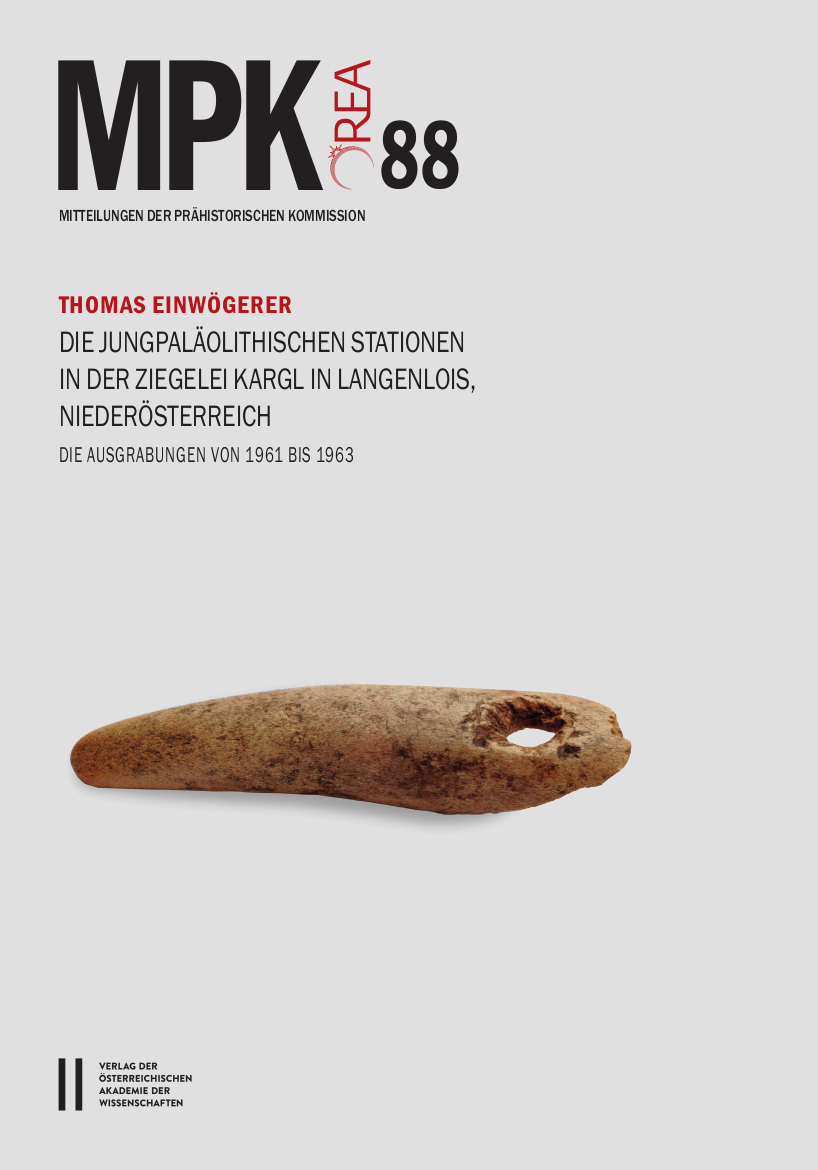
In den frühen 1960er-Jahren wurden auf dem Gelände der Großziegelei Kargl in Langenlois (Niederösterreich) mehrere räumlich und zeitlich voneinander getrennte Fundstellen (A, B und C) des Jungpaläolithikums ausgegraben. Die in Löss eingebetteten Fundstellen liegen an einem Osthang in unmittelbarer Nähe zum Kamp-Fluss. Die vorliegende Publikation präsentiert die in interdisziplinärer Zusammenarbeit gewonnenen Ergebnisse der Aufarbeitung dieser drei jungpaläolithischen Fundstellen. Für die Altsteinzeitforschung im Donauraum ist vor allem die gravettienzeitliche Fundstelle A von besonderer Bedeutung. Der gut dokumentierte Lagerplatz mit einer Vielzahl an Feuerstein-, Knochen-, Geweih- und Elfenbeinartefakten sowie mehreren Feuerstellen und Grübchenbefunden ermöglichte die Herausarbeitung latenter Strukturen wie Aktivitätszonen und einer möglichen Zeltkonstruktion. Die Analyse der Steinrohstoffe erlaubte zudem Aussagen zur Mobilität der hochmobilen Jäger- und Sammlergesellschaft vor rund 30.000 Jahren (calBP). Am unteren Kamp wurden nachweislich vor allem Steinböcke, Rentiere und Pferde gejagt und verwertet. Aufgesammeltes Mammutelfenbein verarbeiteten die Menschen zu Geschossspitzen und anderen möglichen Schmuckobjekten. Die jungpaläolithischen Fundstellen von Langenlois unterstreichen somit einmal mehr die Bedeutung des Kremser Raumes für die österreichische Paläolithforschung.
The burial ground on the Obere Holzwiese (Thunau am Kamp) consists of 215 burials and is therefore by far the largest uncovered burial site of Carolingian times in Lower Austria north of the Danube. After it was archaeologically investigated from 1987 to 1993, the presentation of the burial ground as a whole and its scientific analysis take place in this volume. Furthermore investigations concerning archaeobotanics, material analyses, metallography, textiles and leather contributed essentially to the augmentation of knowledge.
On the Schanzberg of Thunau am Kamp a fortified central settlement, a center of power, existed in Early Medieval times. It is the only extensively excavated site of this kind in Lower Austria. The burial ground belonged to a ‘manor farm’, which built the core of the site. It is to be counted to the prestige burial areas, which formed an essential part of the political centres at the eastern periphery of the Carolingian Empire.
Social affiliations of different kind find expression in burial customs, influenced by actual conditions as well as perceptions of the interred, his/her family and the local society. Thus special attention was payed to the investigation of social identities and relations of the buried, especially social status and age-specific gender roles. Burial practices deviating from the norm and multiple burials offered in particular the possibility to study underlying motivations.
Thunau was situated between the two spheres of power of the enlarged Carolingian Empire and the (Great) Moravian Empire during the 9th century and the political affiliation of extended parts of Lower Austria north of the Danube is unclear. Therefor particular attention is paid to possible assertions regarding a cultural and political orientation of the community burying here.
2019,
978-3-7001-8183-5
978-3-7001-8675-5
260 Seiten, zahlr. Farb- und s/w-Abb.
29,7x21cm, broschiert